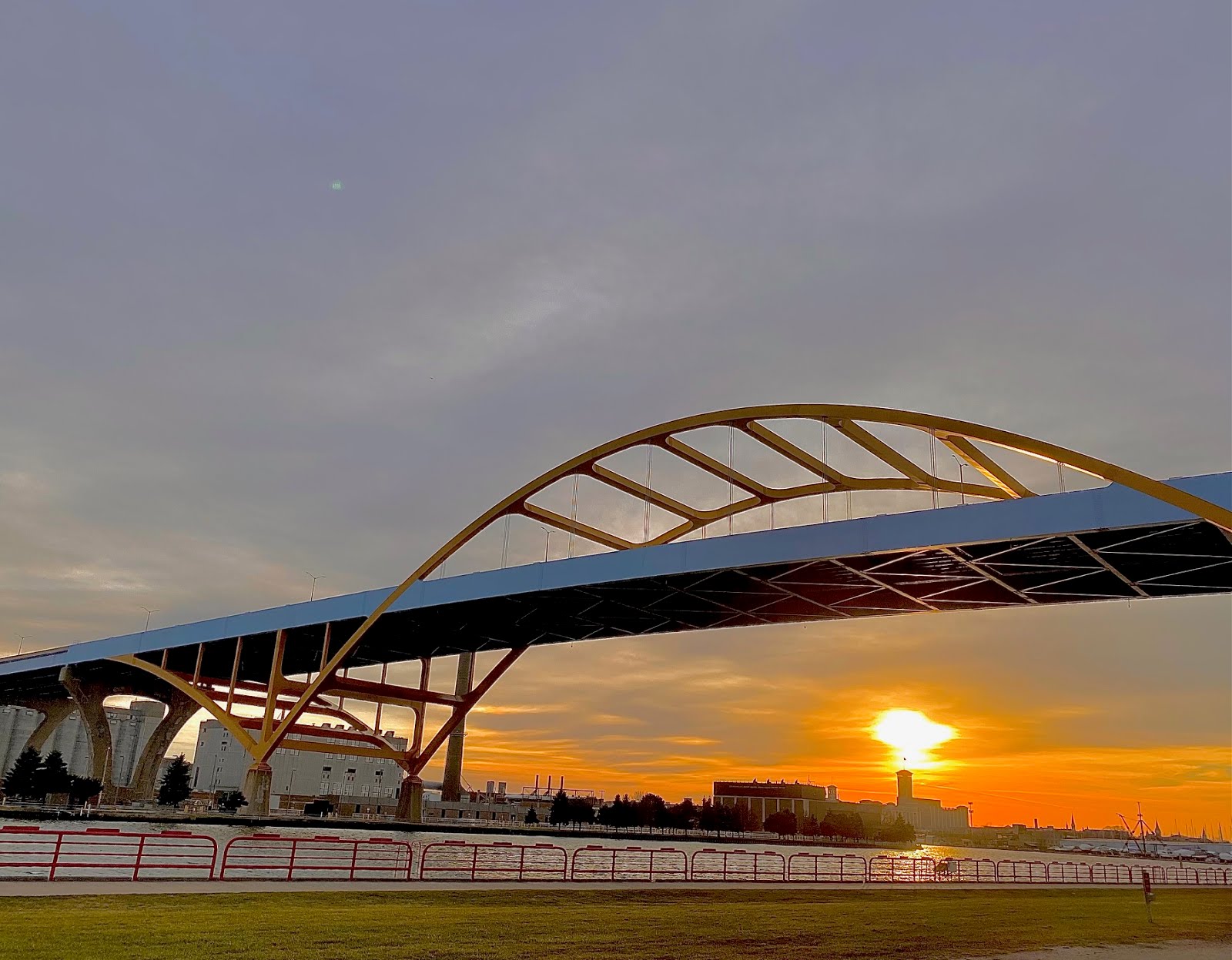Syracuse, NY highway tear down echoes Milwaukee history
Milwaukeeans reading about the damage done by an intrusive highway through an African-American community in Syracuse know that the same thing happened on Milwaukee's north side.

One elevated freeway segment at the north edge of downtown was subsequently torn down through persistent advocacy by former Milwaukee Mayor John O. Norquist (full disclosure, I worked in his office during that process):
Long a transit advocate and foe of smashing highways through cities, Norquist had this to say in an op-ed he wrote last year for this blog:.
So whether it's in Syracuse, or Milwaukee, let's understand the relationships between public planning, taxpayer-paid transportation policies and real-life consequences - - a theme on this blog for years:
This city’s south side was devastated when a highway section went up. Now that there’s talk of taking it down, residents think they should be protected — and compensated.
SYRACUSE, N.Y. — When Ryedell Davis heard the 1.5-mile stretch of elevated highway slicing through this city might be torn down, he had a vision about what could emerge from its dust. He could open a restaurant, near the one his grandparents had before it was bulldozed to make space for Interstate 81.
Surrounding it could be other black-owned businesses, largely absent from the city’s south side because banks historically refused to give loans there. Maybe, he thought, the state would give them all tax credits or offer financial assistance to address the past injustice.That same kind of destruction was done in Milwaukee with public funds for Interstate highway expansion to speed commuters to predominantly-white suburbs. The Milwaukee story is well documented.
When federal, state, and local governments began construction of Interstate 43, the fabric and core of the black community was disrupted. Walnut Street, a major retail corridor that serviced black Milwaukee, suffered and merchants shuttered their stores. Tracts of houses were razed and their residents were relocated into nearby working, lower-middle-class white communities — which resented their new neighbors....
Third Street, the main corridor of the North side, also took a hit from those earlier policy decisions. By 1967, Third Street, a major north-south thoroughfare that ran through Milwaukee’s predominantly black neighborhood, had already become an anemic retail strip...nearly none of which were black-owned.Some proposed freeway system segments were never built, but the damage was widespread:
The '60s were the high-water mark for freeway construction in Milwaukee, with roughly 10 miles of new freeway were completed every year. But those miles were coming at a significant cost -- not just to taxpayers. More than 6,000 homes were demolished, forcing 20,000 people to relocate in order to make way for freeways....

One elevated freeway segment at the north edge of downtown was subsequently torn down through persistent advocacy by former Milwaukee Mayor John O. Norquist (full disclosure, I worked in his office during that process):
Gizmodo: Park East freeway demolition changed Milwaukee foreverAnd Norquist's earlier work in the Legislature had helped stop more concrete intrusions through neighborhoods on the south side, and elsewhere.
Long a transit advocate and foe of smashing highways through cities, Norquist had this to say in an op-ed he wrote last year for this blog:.
By the mid-1970s, the main north-south and east-west freeways were built. I-94 from Marquette to 100th Street was built over the Interurban [railway] right of way that once connected the western suburbs with downtown.
The freeways had huge impacts on land use. Retail spread away from the city. Downtown, which had been the #1 retail district in the state fell out of the top 10 by 1980. North 3rd Street (now King Drive) had been #2 and by 1980 was not even in the top 40.
While not the only factor, removing quality transit and installing high speed highways did not add value to Milwaukee.So the public is left with minimal transit and continuing billions of dollars in freeway maintenance and expansion costs, notably promoted by then-Milwaukee County Executive Scott Walker who, later as Governor, further kept Milwaukee residents walled of behind congested and polluted highways by obstructing options like light rail, street car and Amtrak expansion.
So whether it's in Syracuse, or Milwaukee, let's understand the relationships between public planning, taxpayer-paid transportation policies and real-life consequences - - a theme on this blog for years:
Little wonder that there are profound political southern-style separations between city/suburban-wealthy/low-income and black/white people in our region.
Enabled, in part, by state, regional and local governmental power.









No comments:
Post a Comment